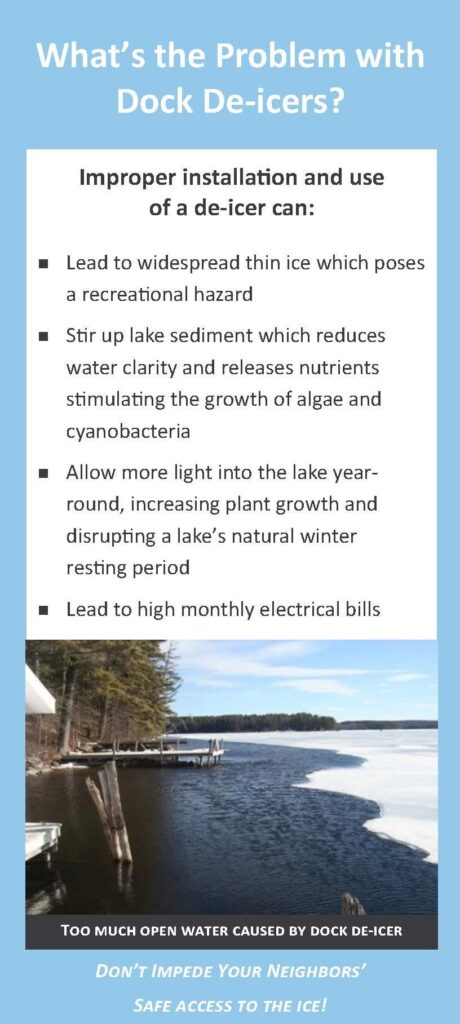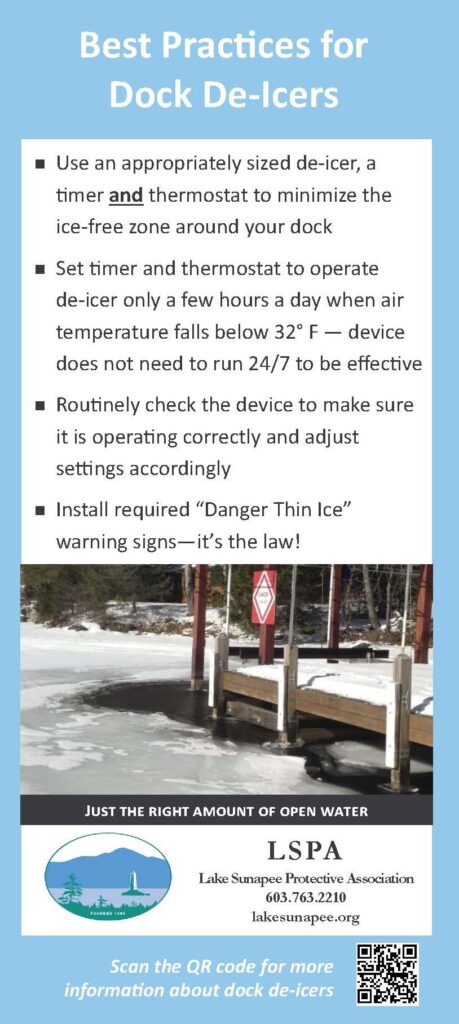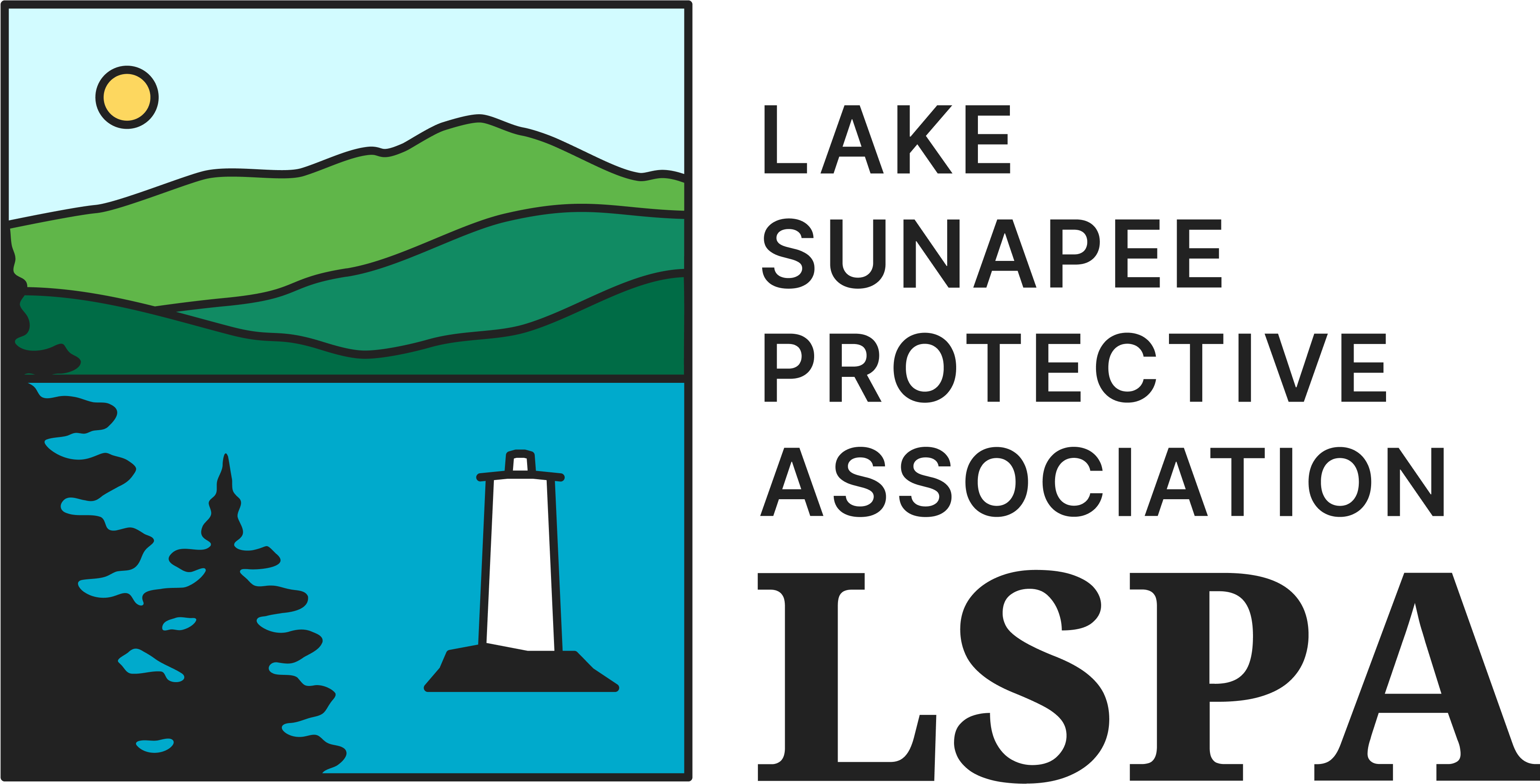Many people use dock de-icers to protect permanent docks and boathouses from ice damage. However, if these devices are not properly managed or installed, they can create large openings with thin ice that are unsafe for recreation during the winter months. These large areas of open water can also lead to greater ice damage to a dock.
The type of device you select will depend on factors such as water depth, water obstructions, dock shape, and geographic location. The size of the device will depend on the size of the area that you want to keep open (ice-free).
Types of De-Icers
-
Bubbler: Works by releasing small air bubbles from a submerged perforated hose powered by an air compressor typically located on a dock or inside a boathouse. Bubbler de-icers don’t stir up lake bottom sediment and are less likely to cause dangerously thin ice conditions.
-
Agitator: Works by circulating the lake water toward the surface. The entire device is submerged in the water and contains lubricating oil that can leak directly into the water from failed seals. This device needs to be used with a timer and/or thermostat to limit the amount of open water. Make sure to check the horsepower of the unit to make sure it’s not too powerful for the amount of space you want to open.
Both of these de-icers only need a few hours each day to do their jobs! In addition, a device that runs for only 2-4 hours a day will significantly reduce operating costs.


Current State Laws for Dock De-Icers
An updated law (NH RSA 270:33) effective in 2019 for Dock De-Icers (see description of the law below) now requires all dock de-icers NOT to “impede either the ingress or egress to or from the ice from any property other than that of the owner of the device.” This usually means that de-icers need to be controlled, with timers and/or temperature controllers, so as not to prevent access to the lake from neighboring properties. According to the law, “The provisions of this section shall be enforced by any law enforcement agency under the direction of the department of safety pursuant to RSA 106-A:14 and the department of fish and game pursuant to RSA 206:26”’.
LSPA suggests contacting NH Marine Patrol at (603) 293-2037 or by email at marinepatrol@dos.nh.gov if you are not able to safely access the lake from your property due to improper operation of a de-icer (other than your own).
NH RSA 270:33 – Heating, Agitating, or Other Devices in Public Waters; Safety Hazard. No person shall put, place, operate, or cause to be put, placed, or operated in the waters of this state any so-called heating, agitating, or other device which inhibits or prevents the natural freezing of water, or forming of ice, and thereby impedes either the ingress or egress to or from the ice from any property other than that of the owner of the device. The person or persons responsible for the placement of the device shall ensure that warning signs are posted to warn of its location. Said signs shall read DANGER, THIN ICE and shall be of sufficient size to be readable at a distance of not less than 150 feet, and shall be visible from all directions and shall be equipped with reflectors and color-coded in a pattern unique for this purpose.
NH RSA 270:34 – Registration Required Any person operating or hereinafter operating any such agitating or heating device which tends to inhibit the natural production of ice on public waters must obtain a registration to be designed and distributed by the department of safety, from the municipal clerk of the town in which such device shall be operated and said registration shall contain the name and address of owner and the location of said device. A permanent file of such registrations shall be kept by municipal clerks and a fee of $.50 per registration may be charged.
Click here to download a dock de-icer (aqua-therm) registration form from Marine Patrol.





